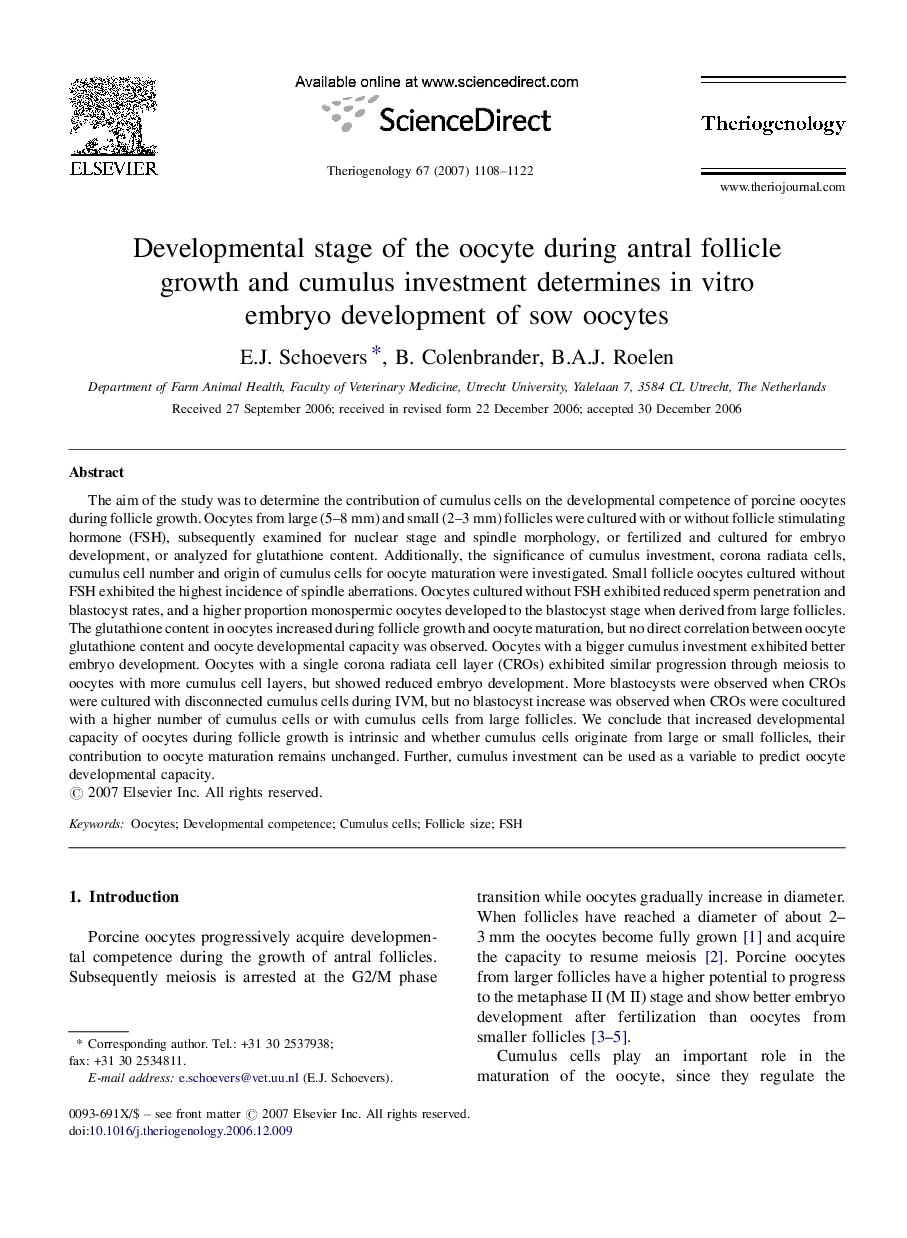| Article ID | Journal | Published Year | Pages | File Type |
|---|---|---|---|---|
| 2097367 | Theriogenology | 2007 | 15 Pages |
The aim of the study was to determine the contribution of cumulus cells on the developmental competence of porcine oocytes during follicle growth. Oocytes from large (5–8 mm) and small (2–3 mm) follicles were cultured with or without follicle stimulating hormone (FSH), subsequently examined for nuclear stage and spindle morphology, or fertilized and cultured for embryo development, or analyzed for glutathione content. Additionally, the significance of cumulus investment, corona radiata cells, cumulus cell number and origin of cumulus cells for oocyte maturation were investigated. Small follicle oocytes cultured without FSH exhibited the highest incidence of spindle aberrations. Oocytes cultured without FSH exhibited reduced sperm penetration and blastocyst rates, and a higher proportion monospermic oocytes developed to the blastocyst stage when derived from large follicles. The glutathione content in oocytes increased during follicle growth and oocyte maturation, but no direct correlation between oocyte glutathione content and oocyte developmental capacity was observed. Oocytes with a bigger cumulus investment exhibited better embryo development. Oocytes with a single corona radiata cell layer (CROs) exhibited similar progression through meiosis to oocytes with more cumulus cell layers, but showed reduced embryo development. More blastocysts were observed when CROs were cultured with disconnected cumulus cells during IVM, but no blastocyst increase was observed when CROs were cocultured with a higher number of cumulus cells or with cumulus cells from large follicles. We conclude that increased developmental capacity of oocytes during follicle growth is intrinsic and whether cumulus cells originate from large or small follicles, their contribution to oocyte maturation remains unchanged. Further, cumulus investment can be used as a variable to predict oocyte developmental capacity.
